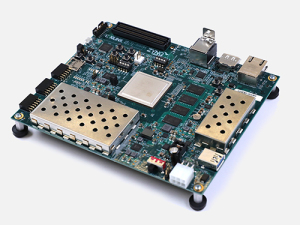Xilinx, Spline.AI unveil X-ray classification deep learning model
by
John R. Fischer, Senior Reporter | October 19, 2020

Xilinx and Spline.AI have developed an open-source X-ray classification deep learning model to help users create their own radiological applications
Processing platform developer Xilinx has teamed up with Spline.AI on Amazon Web Services to develop a medical X-ray classification deep learning model and a reference design kit to help providers.
The open-source model design can be adapted by researchers to meet specific requirements for different applications, and the reference design kit can be used to design trained models of their own for clinical and radiological applications in mobile, portable or point-of-care edge devices. The solution has been used for a pneumonia and COVID-19 detection system, which has shown high levels of accuracy and low levels of latency in producing results. Users also have the option to scale using the cloud.
"Chest X-rays used to detect respiratory diseases, like pneumonia, are the most used radiological procedures with over two billion scans performed worldwide every year," Subh Bhattacharya, lead of healthcare for Medical Devices & Sciences at Xilinx, told HCB News. "That imposes a heavy load on radiologists. The use of deep learning models like this and this kit can help OEMs and providers develop similar flows fast on Xilinx platform and assist radiologists in improving accuracy and speed."
More than 30,000 curated and labeled pneumonia images and 500 COVID-19 images were used to train the pneumonia and COVID-19 detection system, with the data made available for public research by healthcare and research institutes such as the National Institute of Health (NIH), Stanford University and MIT, as well as other hospitals and clinics around the world.
The model’s artificial intelligence is trained using Amazon SageMaker and is deployed from cloud to edge using AWS IoT Greengrass for remote machine learning model updates, geographically distributed inference, and the ability to scale across remote networks and large geographies.
It is deployed on the Xilinx Zynq UltraScale+ MPSoC device-based ZCU104 and utilizes the Xilinx deep learning processor unit (DPU), a soft-IP tensor accelerator powerful enough to run a variety of neural networks including for classification and detection of diseases. Its open-source model runs on a Python programming platform on a Xilinx Zynq UltraScale+ MPSoC device, which is what allows it to be adapted to suit different application-specific requirements.
"Access to large labeled and curated datasets due to privacy laws and data ownership issues is a problem we have faced with Covid-19 data because its new, compared to Pneumonia where we have more data," said Bhattacharya. "Consequently, the accuracy with Pneumonia was >94% whereas Covid-19 detection accuracy is 90%. Xilinx is overcoming this challenge by developing re-trainable models and we'll continue to retrain the model as we access more data."
“The integration of AWS IoT Greengrass enables physicians to easily upload X-ray images to the cloud without the need of a physical medical device, [allowing them] to extend the delivery care to more remote locations,” said Dirk Didascalou, vice president of IoT at Amazon Web Services, in a statement.
|
|
|
You Must Be Logged In To Post A Comment
|
